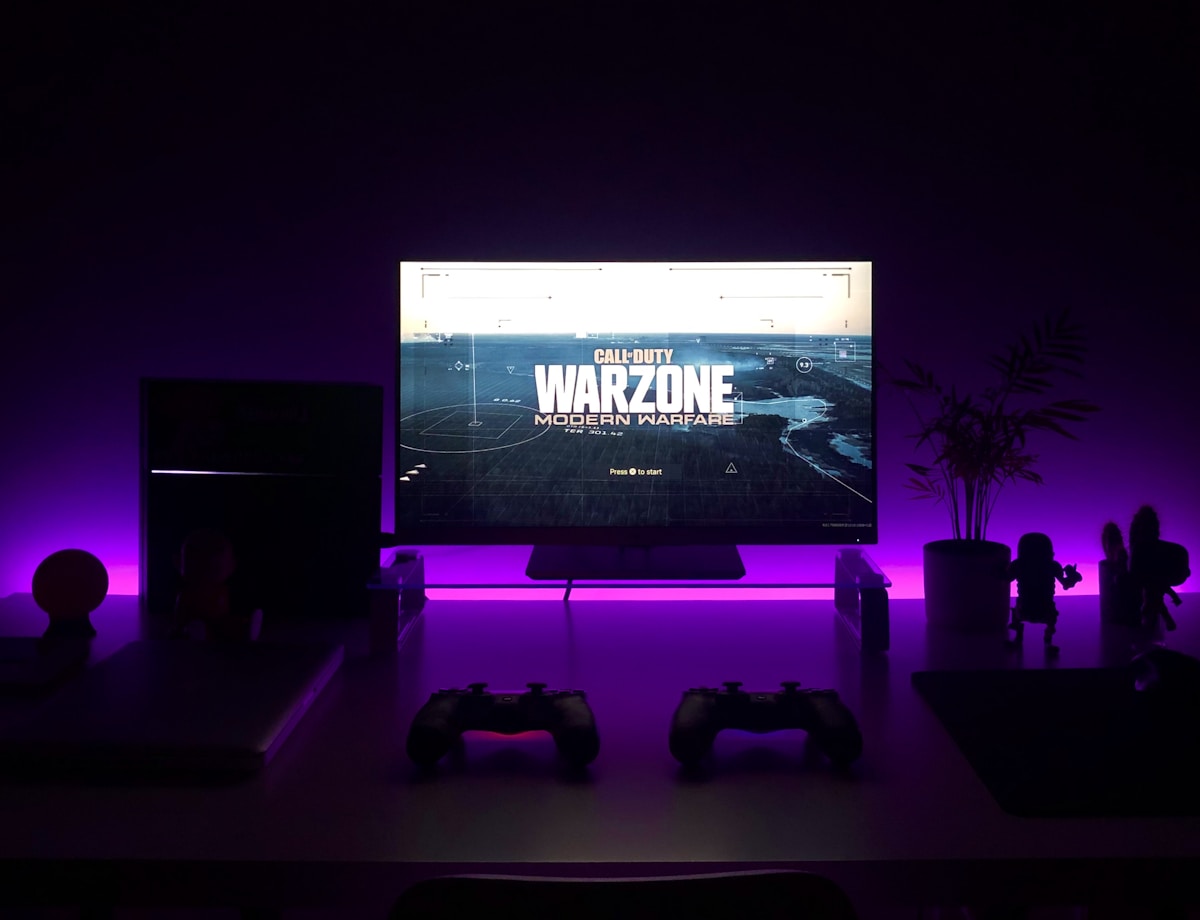Steam’s store pages just got noticeably wider, and for once, everyone seems happy about a UI change. Valve rolled out an update on November 7, 2025 that expands store pages from 940 pixels to 1,200 pixels across the platform. It’s the kind of change that would barely register for most online stores, but this is Steam we’re talking about. The digital storefront has looked essentially the same since the 2000s, so any update is guaranteed to generate discussion.
The wider layout means screenshots display at higher resolutions, trailers get more breathing room, and game descriptions have more space to work with. Valve also added new theater and fullscreen viewing modes for images and videos. It’s not a revolutionary change, but it’s a smart one that makes better use of the large monitors most PC gamers have sitting on their desks in 2025.
Why 1,200 Pixels Specifically
Valve didn’t just randomly pick a new width. According to the company’s official announcement on Steamworks Development, the 1,200 pixel size strikes a good balance, allowing us to display more content without cluttering the page and complicating navigation. That 260 pixel increase might not sound like much, but it’s enough to make a noticeable visual difference without making pages feel cramped or overwhelming.
The main content column expanded from 616 pixels to 780 pixels, giving developers significantly more room to showcase their games. Screenshots can now be displayed at higher resolutions without being squished or cropped awkwardly. Video trailers have more space to shine. Game descriptions aren’t fighting for every inch of horizontal real estate anymore.
For users whose browser or client window is narrower than 1,200 pixels, Valve promises the pages will resize appropriately. Steam store pages are designed to work on tablets, Steam Decks, and mobile devices. The company even tested the changes on an old iPod and found that it mostly works, although things get pretty small. Points for thoroughness, at least.
What Changed Beyond Width
The wider layout enabled several other improvements that enhance the browsing experience. The trailer and screenshot section gained new viewing modes. Theater mode displays media in a larger format without taking over your entire screen, while fullscreen mode does exactly what it sounds like. You can now flip through screenshots and trailers using simple controls without leaving fullscreen, which is perfect for quickly evaluating games.
Search results are wider now, with each row slightly taller to give game artwork more room to breathe. Bundle detail pages have more colorful backgrounds and larger artwork showing what’s included. Recommendation pages like the Interactive Recommender and Popular Among Friends sections use the full width. Store hubs for individual tags like Action or Indie now match the same width as game pages for consistency.
Steam Charts and the News Hub were previously different sizes with different color schemes. Valve consolidated these to bring them more in line with Steam’s platform colors and the new unified width. It’s subtle, but the consistency makes navigating between different Steam sections feel smoother.
New Tools for Developers
Game developers and publishers got some nice new formatting options with the wider layout. Previously, developers could only use .gif files in the description section of their store pages. Now they can use .mp4, .png, .jpg, .webp, and .webm formats with a maximum file size of 100MB and a time limit of 12 seconds.
That might seem like a minor technical detail, but it’s actually huge for game marketing. Short video clips showing specific mechanics or features are far more effective than static gifs. The ability to embed high-quality webm videos directly in descriptions lets developers show off their games without forcing users to watch full trailers.
Store pages also incorporate more background color from the games themselves now, making each page feel more unique and tied to the game’s visual identity. These subtle touches add up to a more polished, professional presentation across the board.
The Beta Period
This wasn’t a surprise update that dropped out of nowhere. Valve started testing the wider pages in the Steam beta client back in August 2025, giving users plenty of time to try them out and provide feedback. The changes rolled out to the desktop client for everyone in September, and now they’ve finally arrived on the web version of the Steam store as well.
The gradual rollout let Valve iron out any issues before pushing the changes to the entire user base. It also gave developers time to adjust their store pages to take advantage of the new layout and tools. That kind of measured approach is typical for Valve, which tends to test things thoroughly before making them standard.
What’s Coming Next
This isn’t the end of Steam’s layout improvements. Valve explicitly stated that similar adjustments are coming to the Steam store homepage in the near future. The homepage has been through several iterations over the years, and widening it to match the new store page format makes sense from a design consistency standpoint.
Valve’s announcement was characteristically understated. We’ve got some similar adjustments coming in the near future for the homepage, but they aren’t quite ready yet. Stay tuned. No timeline, no specifics, just a casual mention that more changes are in the works. That’s very on-brand for a company that will launch an entire game in public testing without acknowledging its existence.
Previous Recent Changes
The wider store pages come on the heels of other Steam improvements throughout 2025. In July, Valve overhauled the Steam Trailer Player with a more flexible user interface and reprocessed videos for better compatibility. The redesigned store menu that consolidated navigation launched in September, making it easier to browse and discover new games.
In August, a beta build gave users the ability to change game titles and upload custom box art icons for games in their library. These cosmetic features eventually made their way to the live client, giving players more control over how their libraries look.
All of these updates point to Valve taking Steam’s user experience more seriously than ever. While the platform dominated PC gaming for years regardless of its interface, competition from Epic Games Store, GOG, and other storefronts has pushed Valve to modernize and improve Steam in ways it might not have bothered with otherwise.
Community Reactions
Unlike many UI changes that spark immediate backlash, the response to wider Steam pages has been overwhelmingly positive. PC gamers generally have large monitors capable of displaying 1920×1080 or higher resolutions, so using more of that screen real estate makes practical sense.
Some users joked about Valve writing a 750-word blog post explaining page width decisions, but that kind of transparency is actually refreshing. Most companies make UI changes without explaining their reasoning, leaving users to speculate. Valve laying out exactly why they chose 1,200 pixels and how they tested it shows respect for their user base.
The only complaints have been minor nitpicks about specific aspects of the layout or requests for even more customization options. But compared to the usual internet outrage over interface changes, this rollout has been remarkably smooth.
FAQs
When did Steam store pages get wider?
The wider store pages rolled out to all users on November 7, 2025. They were previously available in the Steam beta client starting in August, and on the desktop client for everyone in September. November 7 marked the rollout to the web version of the Steam store.
How much wider are the new Steam store pages?
Steam store pages increased from 940 pixels to 1,200 pixels in width, a gain of 260 pixels. The main content column expanded from 616 pixels to 780 pixels, giving developers more room to showcase their games.
Will the wider pages work on my device?
Yes, Steam store pages are designed to resize appropriately for devices with screens smaller than 1,200 pixels. They work on tablets, Steam Decks, and mobile devices. Valve even tested them on an old iPod, though elements appear quite small on that device.
What new features came with the wider store pages?
Along with the increased width, Steam added theater mode and fullscreen viewing options for screenshots and trailers, higher resolution image display, new media format support for developers including .mp4 and .webm files, and more colorful backgrounds that incorporate game visuals.
Are there more changes coming to Steam?
Yes, Valve stated that similar adjustments are coming to the Steam store homepage in the near future but didn’t provide a specific timeline. The company has been consistently updating Steam throughout 2025 with various improvements.
Can developers use videos in game descriptions now?
Yes, developers can now use .mp4, .webm, .png, .jpg, and .webp formats in game descriptions, not just .gif files. Videos can be up to 100MB and 12 seconds long, allowing developers to showcase specific mechanics or features effectively.
Why did Valve choose 1,200 pixels specifically?
According to Valve, 1,200 pixels strikes a good balance between displaying more content and maintaining easy navigation. It’s wide enough to show higher resolution media and give developers more space without cluttering pages or overwhelming users.
Do I need to update my Steam client to see the wider pages?
The changes are server-side, meaning they apply automatically whether you’re using the Steam client or browsing the web version of the store. You don’t need to manually update anything to see the wider layout.
Conclusion
Steam’s transition to wider store pages represents the kind of thoughtful, user-focused update that gaming platforms should aspire to. By expanding the layout to better utilize modern monitors, improving media display options, and giving developers better tools to showcase their games, Valve has enhanced the browsing experience without alienating users or breaking functionality. The gradual rollout through beta testing showed respect for the community, and the overwhelmingly positive response proves that sometimes the simplest changes make the biggest difference. As Valve continues updating Steam throughout 2025 and beyond, this kind of measured, practical improvement sets a good precedent for how legacy platforms can modernize without losing what made them successful in the first place.



